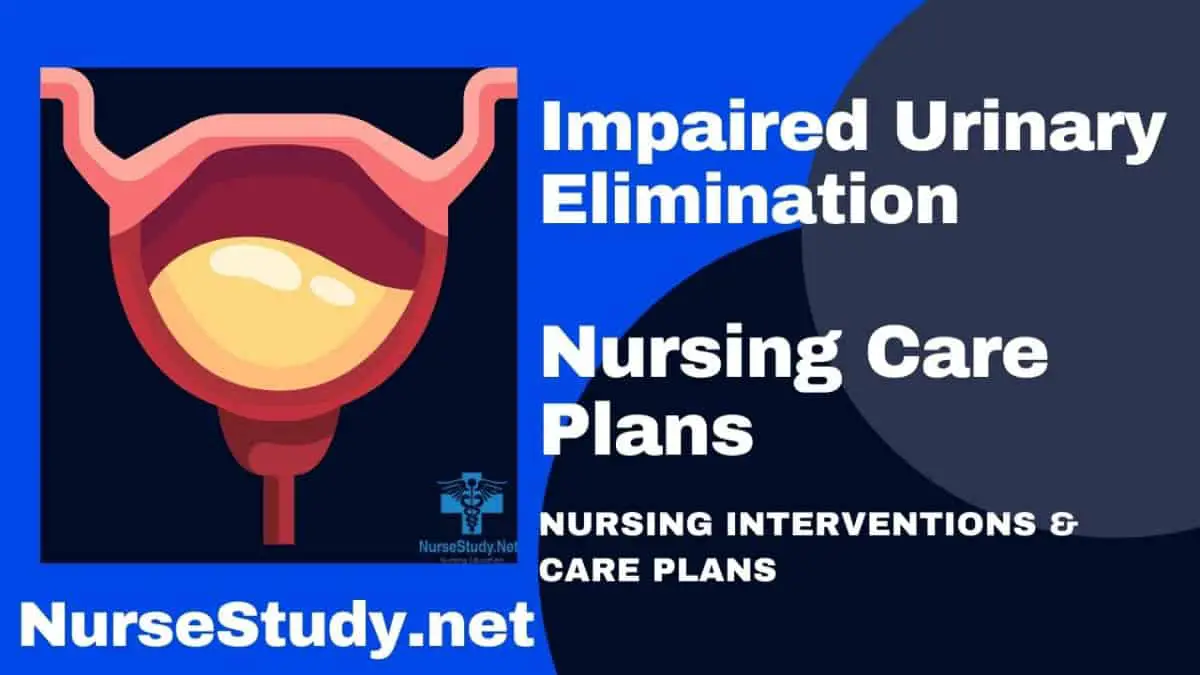Impaired urinary elimination is a common nursing diagnosis that significantly impacts patient quality of life and requires careful assessment, planning, and intervention.
Understanding Impaired Urinary Elimination
Impaired urinary elimination occurs when a patient experiences difficulties with urine excretion, often due to physiological, anatomical, or neurological factors. This condition can manifest in various ways, from complete urinary retention to frequent, urgent elimination patterns. Understanding the underlying causes and manifestations is crucial for developing effective nursing interventions.
Common Causes (Related Factors)
- Neurological disorders (Multiple Sclerosis, Parkinson’s disease)
- Structural abnormalities of the urinary tract
- Pelvic floor muscle weakness
- Prostatic hyperplasia
- Medication side effects
- Post-surgical complications
- Trauma to the urinary system
- Psychological factors
- Age-related changes
- Pregnancy and childbirth
Signs and Symptoms
Subjective Data (Patient Reports)
- Burning sensation during urination
- Difficulty initiating urination
- Feelings of incomplete bladder emptying
- Pain or discomfort in the lower abdomen
- Urgency to urinate
- Frequency of urination
- Nocturia
Objective Data (Nurse Assessment)
- Measurable post-void residual
- Presence of bladder distention
- Observable incontinence
- Altered urinary output patterns
- Changes in urine characteristics
- Need for catheterization
- Decreased urine flow rate
Comprehensive Nursing Assessment
1. Physical Assessment
- Measure vital signs
- Perform abdominal examination
- Assess for bladder distention
- Evaluate perineal area
- Check for edema
- Monitor skin integrity
2. History Taking
- Document current symptoms
- Review past medical history
- List current medications
- Note previous urologic procedures
- Record dietary and fluid habits
- Assess mobility status
3. Diagnostic Studies
- Review urinalysis results
- Monitor blood chemistry values
- Evaluate imaging studies
- Track intake and output
- Document post-void residuals
- Note urodynamic study results
Nursing Care Plans for Impaired Urinary Elimination
Care Plan 1: Acute Urinary Retention
Nursing Diagnosis Statement:
Impaired Urinary Elimination related to urethral obstruction as evidenced by bladder distention and inability to void.
Related Factors:
- Prostatic enlargement
- Medication side effects
- Post-operative complications
Nursing Interventions and Rationales:
Perform bladder scanning every 4 hours.
- Rationale: Monitors bladder volume and prevents overdistention
Implement straight catheterization protocol
- Rationale: Relieves acute retention and prevents bladder damage
Monitor intake and output strictly
- Rationale: Ensures adequate fluid balance and identifies patterns
Desired Outcomes:
- The patient will void spontaneously within 24 hours
- The patient will maintain bladder volume below 400ml
- The patient will verbalize decreased discomfort
Care Plan 2: Stress Incontinence
Nursing Diagnosis Statement:
Impaired Urinary Elimination related to weakened pelvic floor muscles as evidenced by involuntary urine leakage with physical exertion.
Related Factors:
- Pregnancy and childbirth
- Obesity
- Chronic cough
- Age-related changes
Nursing Interventions and Rationales:
Teach Kegel exercises
- Rationale: Strengthens pelvic floor muscles
Implement timed voiding schedule
- Rationale: Prevents bladder overdistention
Provide education on lifestyle modifications
- Rationale: Reduces risk factors for incontinence
Desired Outcomes:
- The patient will demonstrate the proper Kegel technique
- The patient will report decreased episodes of incontinence
- The patient will maintain skin integrity
Care Plan 3: Neurogenic Bladder
Nursing Diagnosis Statement:
Impaired Urinary Elimination related to neurological impairment as evidenced by incomplete bladder emptying and frequent UTIs.
Related Factors:
- Spinal cord injury
- Multiple sclerosis
- Diabetic neuropathy
Nursing Interventions and Rationales:
Teach clean intermittent catheterization
- Rationale: Ensures complete bladder emptying
Monitor for UTI symptoms
- Rationale: Early detection prevents complications
Maintain adequate fluid intake
- Rationale: Prevents urinary stasis and infection
Desired Outcomes:
- The patient will demonstrate proper catheterization technique.
- The patient will maintain urine output within normal limits
- The patient will remain free from UTIs
Care Plan 4: Urge Incontinence
Nursing Diagnosis Statement:
Impaired Urinary Elimination related to detrusor overactivity as evidenced by sudden urge to void and inability to reach bathroom in time.
Related Factors:
- Bladder irritants
- Neurological conditions
- Medication side effects
Nursing Interventions and Rationales:
Implement a bladder training program
- Rationale: Increases bladder capacity and control
Educate about dietary triggers
- Rationale: Reduces bladder irritation
Teach urge suppression techniques
- Rationale: Improves bladder control
Desired Outcomes:
- The patient will increase the time between void attempts
- The patient will report decreased urgency
- The patient will identify dietary triggers
Care Plan 5: Overflow Incontinence
Nursing Diagnosis Statement:
Impaired Urinary Elimination related to chronic urinary retention as evidenced by frequent small-volume voiding and constant dribbling.
Related Factors:
- Bladder outlet obstruction
- Neurogenic bladder
- Medication side effects
Nursing Interventions and Rationales:
Perform post-void residual measurements
- Rationale: Assesses the effectiveness of bladder emptying
Implement double-voiding technique
- Rationale: Improves bladder emptying
Monitor for UTI symptoms
- Rationale: Prevents complications
Desired Outcomes:
- The patient will maintain post-void residual <100ml
- The patient will report decreased dribbling
- The patient will demonstrate proper voiding techniques
References
- American Journal of Nursing. (2023). “Current Evidence-Based Practices in Urinary Elimination.” Volume 123(4), 45-52.
- Journal of Wound, Ostomy and Continence Nursing. (2023). “Nursing Management of Urinary Incontinence: A Systematic Review.” Volume 50(2), 112-120.
- International Journal of Urological Nursing. (2023). “Best Practices in Neurogenic Bladder Management.” Volume 17(3), 98-106.
- Urologic Nursing Journal. (2023). “Evidence-Based Interventions for Improving Patient Outcomes in Urinary Elimination.” Volume 43(1), 23-31.
- Journal of Clinical Nursing. (2023). “Nursing Care Plans for Urinary Elimination Disorders: A Critical Analysis.” Volume 32(5), 678-686.
- Nursing Research. (2023). “Effectiveness of Nursing Interventions in Managing Urinary Elimination Problems: A Meta-Analysis.” Volume 72(2), 156-164.

